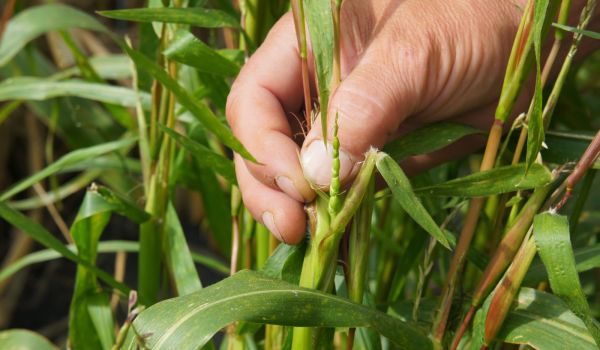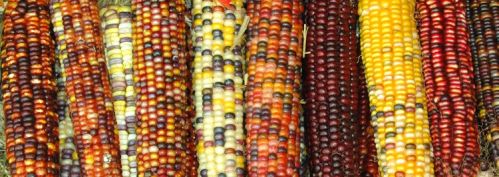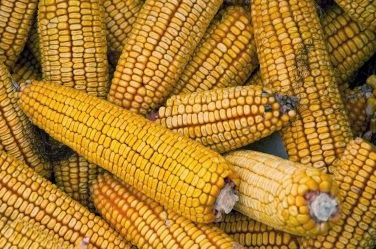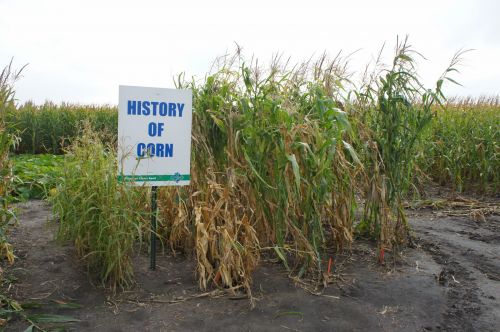Commercial Corn – Where Did It Start?

“Indian” corn appears at grocery stores and farmers markets in the fall, a decorative reminder that Thanksgiving is approaching. With all of the images we have seen or imagined of the first Thanksgiving, it would be easy to assume that corn originated in the New England region, and that it looked just like the above photo. But, the origins of corn date back much farther.
PFS resident “Corn Guy” Mike Larson is a bit of a history buff, and he used his research talents by looking at the history of corn. He focused on yellow dent corn, the foundation of modern-day corn.
In the beginning, there was Teosinte. Teosinte-like seeds were discovered near Mexico City, dating back 7,000 years. Mayans, Incans and Aztecs made the transition from Teosinte to Longfellow by selecting traits and saving kernels from plants with desirable characteristics to plant during the next season. It eventually reached the southern New England region of the United States, where Native Americans taught colonists to cultivate corn.
Fast forward to the first half of the 19th century to poet Henry Wadsworth Longfellow’s home in Massachusetts. His records of Longfellow Flint corn are written using a possessive case, as if the variety originated with him. Although we’re unsure of his involvement with the crop, the prevalence of corn or maize in his poetry suggests he was knowledgeable about it.
In 1846, a man named Robert Reid moved to Illinois from Ohio. Robert brought a few bushels of Gordon Hopkins seed corn, a huge plant with fruit-colored kernels. That fall, Robert harvested a plentiful crop of immature ears, saving the best ones to plant the following spring. He got a poor stand, so he replanted Little Yellow corn (native to the Illinois prairie) among the sparse Gordon Hopkins plants. Apparently, these two corn plants were an ideal combination of genes. With a 40-day difference in maturity (80 days for Gordon Hopkins and 120 days for Little Yellow), these plants cross-pollinated, and produced the basis of Reid’s Yellow Dent corn.
Recognizing the value of cross-bred corn, Robert’s son James devoted his life to developing and improving Reid’s Yellow Dent. He used careful selection and crop management to perfect the corn, and raised Reid’s Yellow Dent exclusively.
Each fall, James gathered the best looking ears to use for exhibitions. In 1891, James exhibited the corn at the Illinois State Fair, and received the highest award. His efforts were further recognized in a very big way when he won the blue ribbon at the 1893 World’s Fair. Reid’s Yellow Dent became known as World’s Fair Corn. James established a mail order seed corn trade, sending corn to growers in Illinois and neighboring states. It proved to be successful in many parts of the country, adapting to varying soil conditions, temperatures and growing seasons. By the early 1900s, Reid’s Yellow Dent was more widely distributed than any other variety.
Hybrid corn seed was very slow to be adapted. US 13, the first hybrid corn sold in the U.S. in the mid 1920s, was a double-cross hybrid, resulting from crossing four parent lines. Reid’s Yellow Dent was one of the parent lines and comprises the base genetics of modern-day corn.






